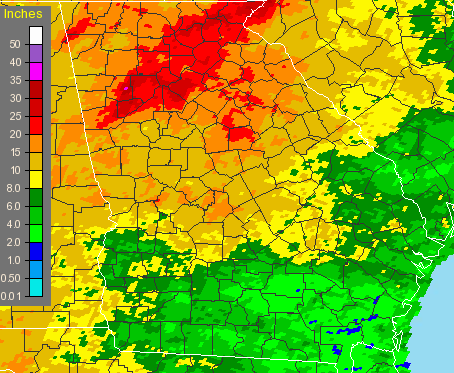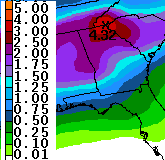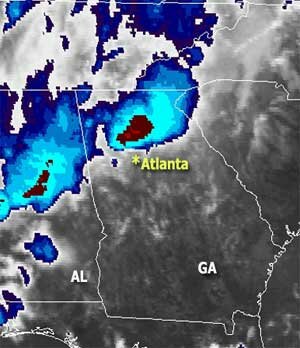Groundhogs Split on Early Spring Chances
Tuesday, February 2nd, 2010Once again, it’s Groundhog Day, when the marmots emerge from their holes and decide whether spring is near or not. This year, Lilburn’s own Beauregard Lee emerged on a rainy morning and didn’t see his shadow, foretelling an early spring. However, up in Gobbler’s Knob, Pennsylvania, Punxsutawney Phil arose and saw his shadow, calling for six more weeks of winter. Other woodchucks in Long Island and Canada also split on their forecasts.
Of course, the idea of an animal being able to predict the weather might be more valid if we looked at the timing of its emergence, rather than forcing a decision on February 2nd. For example, I saw the first robin of the season over the weekend. The daffodils seem to be running late this year, another sign of a late spring. The weather service also is calling for a late spring, at least in the south (see my previous post), and the outlook for the next two weeks calls for colder than normal weather.
By the way, how do they decide if the groundhog has made an accurate prediction? At least in Pennsylvania, they look at the number of days in the six weeks after groundhog day when the temperature rises above 40 degrees. If it’s more than half, spring arrived early. 40 degrees wouldn’t work here in Atlanta, where the normal high temperature on February 2nd is 54 degrees. By the first of March, it will be up to 60.
January wasn’t very warm. The mean temperature at Hartsfield Airport in Atlanta for the month was 38.5 degrees, which was 4.2 degrees below normal. It was a little cooler here in Lawrenceville, with 37.3 degrees. Athens was slightly warmer with an average 39.7 degrees, 2.5 degrees below normal. January rainfall was 5.38 inches in Atlanta, .35 inches above normal. Athens had more precipitation, with 6.2 inches, or 1.51 inches above normal. Here in Lawrenceville, I recorded 5.06 inches of rain, however that might be a little short of reality, since my rain gauge doesn’t really handle snow very well.
There’s plenty more rain coming later in the week — up to three inches more. I’m getting tired of it, as I’m sure you are as well.
Sphere: Related Content


 Unfortunately, it looks like we’re up for more rain on Wednesday. After a relatively pleasant day tomorrow, the rain will return, and according to the latest estimate from the Weather Service, shown at right, we could have another two to two and a half inches through Thursday evening, with higher amounts in the northeast Georgia mountains. If that scenario does pan out, expect more possible flooding, since the ground will be even more saturated than when the rain started this morning.
Unfortunately, it looks like we’re up for more rain on Wednesday. After a relatively pleasant day tomorrow, the rain will return, and according to the latest estimate from the Weather Service, shown at right, we could have another two to two and a half inches through Thursday evening, with higher amounts in the northeast Georgia mountains. If that scenario does pan out, expect more possible flooding, since the ground will be even more saturated than when the rain started this morning.
